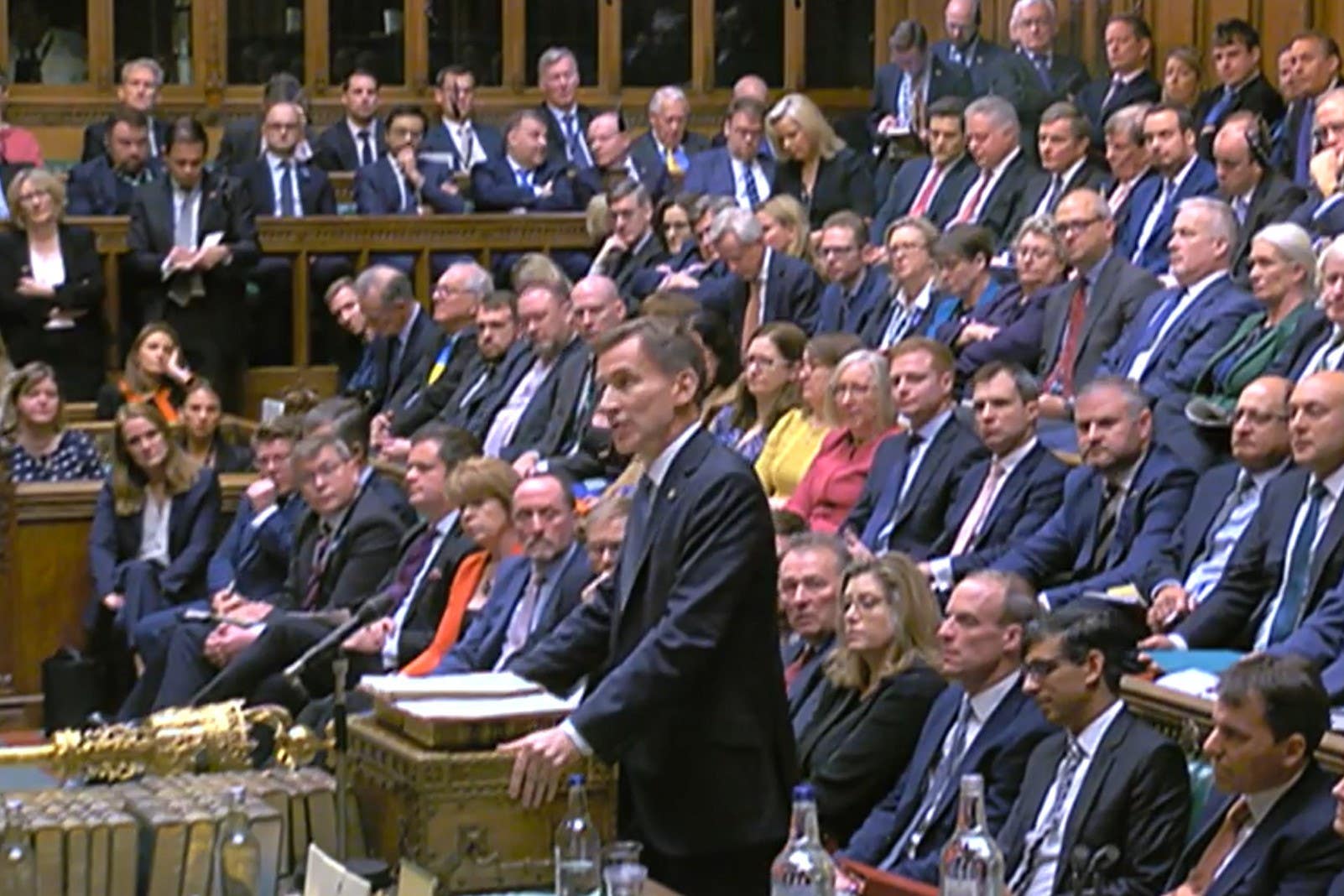Autumn statement 2022: Grim historic milestones facing the UK economy
Living standards are set to slump back to levels last seen in 2013/14.

Your support helps us to tell the story
From reproductive rights to climate change to Big Tech, The Independent is on the ground when the story is developing. Whether it's investigating the financials of Elon Musk's pro-Trump PAC or producing our latest documentary, 'The A Word', which shines a light on the American women fighting for reproductive rights, we know how important it is to parse out the facts from the messaging.
At such a critical moment in US history, we need reporters on the ground. Your donation allows us to keep sending journalists to speak to both sides of the story.
The Independent is trusted by Americans across the entire political spectrum. And unlike many other quality news outlets, we choose not to lock Americans out of our reporting and analysis with paywalls. We believe quality journalism should be available to everyone, paid for by those who can afford it.
Your support makes all the difference.Forecasts published as part of the autumn statement by Chancellor Jeremy Hunt suggest the country is facing some grim economic milestones.
– Biggest drop in disposable income since records began
The sharp rise in the cost of living means real household disposable income per person is forecast to drop by 4.3% in 2022/23: the largest fall in a single financial year since comparable records began in 1956/57.
This is to be followed by a further drop of 2.8% in 2023/24, according to the Office for Budget Responsibility (OBR).
It would be only the third time in modern history that the UK has seen back-to-back falls in living standards.
The previous two occasions were in 2010/11 and 2011/12, and in 1975/76 and 1976/77.
Taken together, the 7.1% cumulative fall across 2022/23 and 2023/24 is large enough to wipe out the past eight years of growth and would see disposable income back to the level it was in 2013/14.
– Highest tax burden (as % of GDP) since end of Second World War
Following the Government’s spring financial statement in March 2022, the OBR forecast the overall tax burden in the UK would rise to the equivalent of 36.3% of GDP (gross domestic product, or the total value of the economy) by 2025/26.
This would have been the highest level since 1949/50.
The new forecast sees the tax burden peaking even higher, at 37.5% of GDP in 2024/25.
This is the highest level since the end of the Second World War.
From there, it is forecast to fall gradually to 37.1% of GDP by 2027/28, but remains 4.1 percentage points above its pre-pandemic level, and at its highest sustained level for seven decades.
– Highest debt (as % of GDP) since 1959/60
Public sector net debt in the UK for the financial year ending March 2024 is forecast by the OBR to reach the equivalent of 106.7% of GDP.
This would be the highest level since the end of the financial year 1959/60, when debt stood at 107.5% – a time when Harold Macmillan was Conservative prime minister and Lonnie Donegan was top of the singles chart with My Old Man’s A Dustman.
– Highest annual inflation rate since 1981
The UK’s annual rate of inflation is forecast to hit 9.1% for 2022.
This would be the highest rate since 1981, when the rate stood at 11.8% and the country was two years in to the first Conservative government of Margaret Thatcher.
At the Budget in October last year, inflation for 2022 was forecast to be 4.0%.
The sharp jump in the forecast, to more than double this figure, reflects how quickly the cost-of-living crisis has escalated and how the state of the economy has declined.